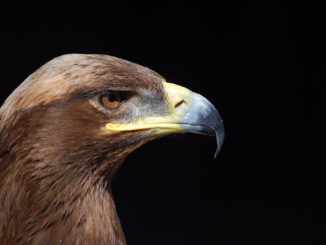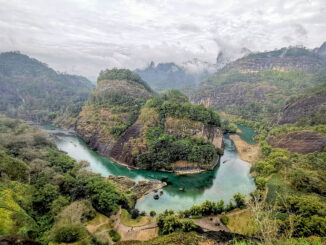
A rare and threatened species of bear has been spotted in a park in Nepal for the first time in over a decade.
The sloth bear is endemic to South Asia but the species is in decline.
Named for its sloth-like foreclaws, the species is rapidly losing habitat, drawing concern from the International Union for Conservation of Nature. The sloth bear is listed as “vulnerable” in the IUCN’s Red List of Threatened and Endangered Species.
With less than 17,000 individuals believed to be surviving in the wild, the sloth bear is an increasingly rare sight in the region’s protected areas. However, a wildlife study conducted with camera traps captured images of a sloth bear foraging in Shuklaphanta National Park, Nepal.
Researchers said the photograph, taken last year, is the first visual confirmation of the species inhabiting this park made in a decade. Shuklaphanta National Park is found in Nepal’s far west on the border with India.
“We recorded seven photos of a solitary sloth bear moving across the field of view at a single camera trap,” the researchers said in their report, published in the journal BioOne. The study was published by the International Association of Bear Research and Management.
The research team stressed the importance and significance of the find in conservation value. Sloth bears reportedly vanished entirely from Shuklaphanta National Park and much of Nepal in the 1980s due to illegal hunting for their gallbladers. The species has been completely extirpated from Bangladesh.
Their gallbladders are used for pseudoscientific Chinese medicinal practices.
They said the photo was taken at the entrance of the Shuklaphanta Grassland. The study’s initial purpose was to track the movements of Bengal tigers in the park. The research team led by Bipana Maiya Sadadev of the University of Northern British Columbia reported that they successfully captured images of a Bengal tiger in the park, but also the unexpected occurrence of an adult sloth bear.
“The animal was identified as a sloth bear based on the long snout and long, sloth-like claws,” the authors wrote.
A photo published with the report shows a slightly grainy black-and-white image taken of the sloth bear at night. As the paper indicates, the long claws are clearly visible and the animal’s snout shape is indicative of the species.
Given ongoing pressures from poaching and habitat loss, the research team argues that further investigation of the sloth bear’s presence in Shuklaphanta and other protected areas is critical to begin the work of preventing the sloth bear’s extinction. “The sloth bear is an elusive and vulnerable mammal, and this finding highlights the importance of further research into the occurrence and movements of sloth bears in the region,” the study says.
©2025 Public Parks
Park Info
Park Name:
Shuklaphanta National Park
Location:
Nepal



